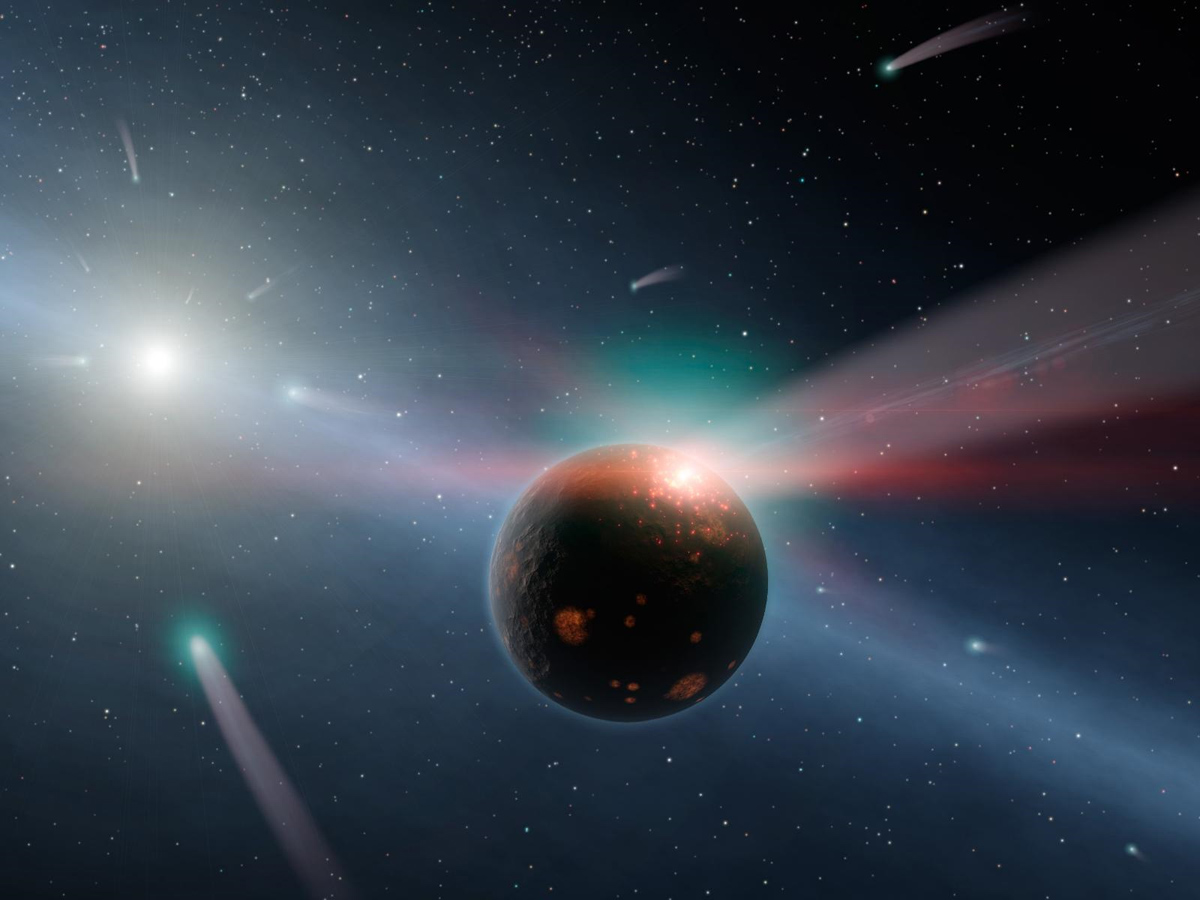
Exocomets are fascinating celestial objects that orbit stars outside our solar system. Unlike the comets we know, these space travelers journey through distant star systems, offering clues about the universe's formation. Exocomets are composed of ice, dust, and rock, much like their solar system counterparts. They can provide insights into the early stages of planetary systems. Observing these icy wanderers helps scientists understand the building blocks of planets and the conditions in other star systems. Exocomets have been detected around various stars, including Beta Pictoris and Fomalhaut. Their tails, created by solar radiation, can be seen with advanced telescopes. Dive into these 26 intriguing facts about exocomets to learn more about these cosmic nomads and their role in the universe.
What Are Exocomets?
Exocomets are comets that exist outside our solar system. They orbit stars other than our Sun and are fascinating objects for astronomers to study. Here are some intriguing facts about these celestial wanderers.
-
Exocomets are similar to the comets in our solar system, composed of ice, dust, and rocky material.
-
They are often detected by the light they block when passing in front of their host stars.
-
The first exocomet was discovered in 1987 around the star Beta Pictoris.
-
Exocomets can provide clues about the formation and evolution of planetary systems.
-
They are typically found in young star systems, where debris disks are still present.
How Are Exocomets Detected?
Detecting exocomets is a challenging task that requires sophisticated technology and methods. Here are some ways astronomers identify these distant objects.
-
Astronomers use spectroscopic techniques to detect the gas and dust released by exocomets.
-
The Kepler Space Telescope has been instrumental in identifying exocomet transits.
-
Infrared telescopes can detect the heat emitted by exocomets as they approach their host stars.
-
Observations of exocomet tails can reveal their composition and structure.
-
Some exocomets are detected through the study of circumstellar disks, which are rings of dust and debris around stars.
Why Are Exocomets Important?
Studying exocomets can reveal much about the universe and our place within it. Here are some reasons why these objects are significant.
-
Exocomets can help us understand the early stages of planetary system formation.
-
They may deliver water and organic molecules to young planets, potentially aiding the development of life.
-
The study of exocomets can provide insights into the dynamics of star systems.
-
They can act as tracers for the presence of unseen planets.
-
Exocomets can reveal the chemical composition of distant star systems.
Famous Exocomet Discoveries
Some exocomet discoveries have made headlines and advanced our understanding of the cosmos. Here are a few notable examples.
-
The Beta Pictoris system has over 30 detected exocomets, making it a key study area.
-
The star HD 172555 shows evidence of a massive exocomet collision.
-
The Fomalhaut system contains a debris disk with signs of exocomet activity.
-
The star Eta Corvi has a debris disk that suggests recent exocomet impacts.
-
The star 49 Ceti has been found to have a large number of exocomets, indicating a young and active system.
Challenges in Studying Exocomets
Despite their importance, studying exocomets comes with its own set of challenges. Here are some obstacles astronomers face.
-
The vast distances make direct observation difficult.
-
Exocomets are often faint and hard to detect against the brightness of their host stars.
-
The transient nature of exocomet activity requires continuous monitoring.
-
Differentiating between exocomets and other types of celestial objects can be complex.
-
Limited technology and resources can hinder the study of these distant objects.
Future of Exocomet Research
The future holds exciting possibilities for exocomet research. Here are some developments to look forward to.
- Upcoming space telescopes like the James Webb Space Telescope will enhance our ability to study exocomets in greater detail.
The Final Frontier
Exocomets are fascinating celestial bodies that offer a glimpse into the early stages of planetary systems. These icy travelers, found beyond our solar system, can tell us a lot about the formation and evolution of planets. Their tails, composed of gas and dust, create stunning visuals when they pass close to their host stars. Scientists study exocomets to understand more about the building blocks of planets and the conditions that lead to the formation of habitable worlds. As technology advances, our ability to detect and analyze these distant objects improves, opening up new avenues for discovery. So, the next time you gaze at the night sky, remember that out there, beyond the stars we see, exocomets are journeying through space, carrying secrets of the cosmos. Keep your curiosity alive; the universe is full of wonders waiting to be explored.
Was this page helpful?
Our commitment to delivering trustworthy and engaging content is at the heart of what we do. Each fact on our site is contributed by real users like you, bringing a wealth of diverse insights and information. To ensure the highest standards of accuracy and reliability, our dedicated editors meticulously review each submission. This process guarantees that the facts we share are not only fascinating but also credible. Trust in our commitment to quality and authenticity as you explore and learn with us.
